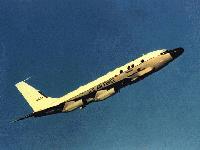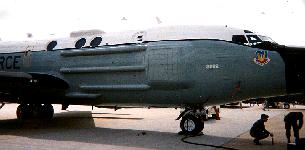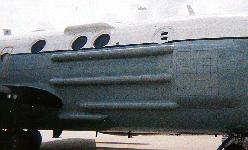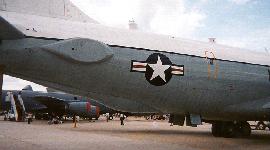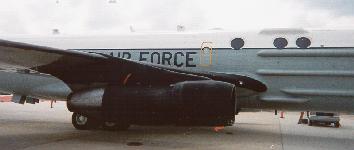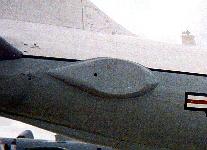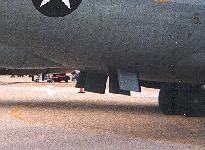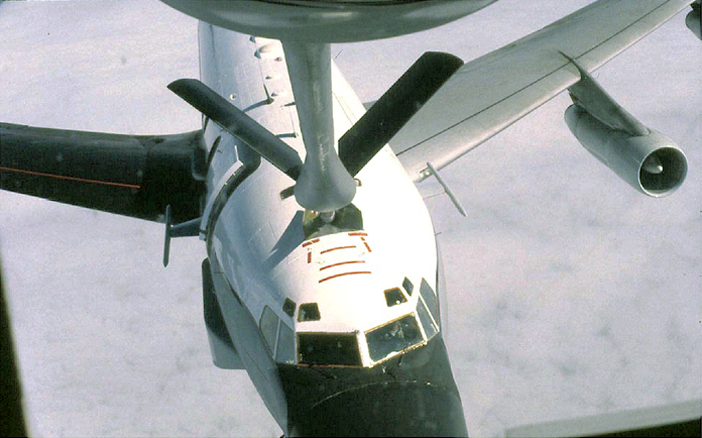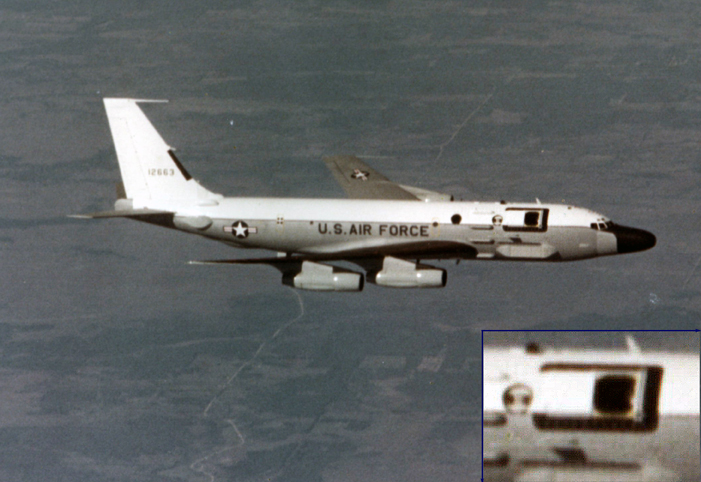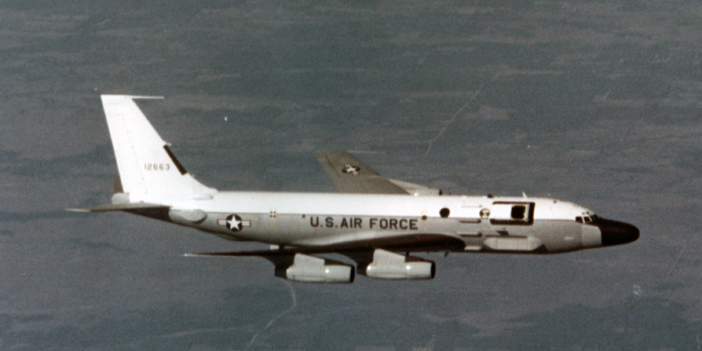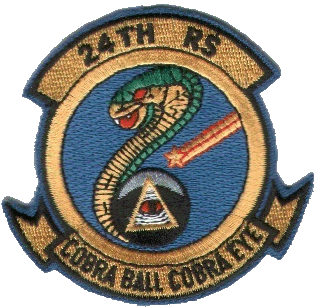 COBRA BALL is an Air Force airborne intelligence platform (RC-135) which carries infrared telescopes for tracking ballistic-missile tests at long range. COBRA BALL operates out of Offutt AFB NE and deploys to various locations around the world.
COBRA BALL is an Air Force airborne intelligence platform (RC-135) which carries infrared telescopes for tracking ballistic-missile tests at long range. COBRA BALL operates out of Offutt AFB NE and deploys to various locations around the world.



 COBRA BALL is an Air Force airborne intelligence platform (RC-135) which carries infrared telescopes for tracking ballistic-missile tests at long range. COBRA BALL operates out of Offutt AFB NE and deploys to various locations around the world.
COBRA BALL is an Air Force airborne intelligence platform (RC-135) which carries infrared telescopes for tracking ballistic-missile tests at long range. COBRA BALL operates out of Offutt AFB NE and deploys to various locations around the world.
The Cobra Ball suite of Signals Intelligence (SIGINT) and Measurements and Signatures Intelligence (MASINT) sensor systems designed to exploit the enemy electromagnetic spectrum. The MASINT sensors are two linked electro-optical sensors -- the Real Time Optics System (RTOS) and the Large Aperture Tracker System (LATS). RTOS consists of an array of staring sensors encompassing a wide field of regard for target acquisition. LATS serves as an adjunct tracker. Due to its large aperture, it has significantly greater sensitivity and resolving power than the RTOS, but is otherwise similar. Connectivity includes JTIDS and TIBS data links.
Variants have been proposed for the operational detection of theater ballistic missile launches. In war, Cobra Ball could provide rapid recognition of TBM launches following cloud-break and horizon clearance. Within seconds of launch detection, estimates of launch point, intercept point, and impact point are available for transmission over a data link to theater C4I elements like AWACS, JSTARS, and the AOC. Estimates of increasing accuracy are transmitted during the course of the missile's flight until burnout has occurred.
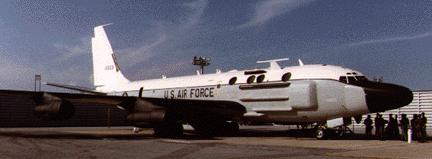
The Big Safari program delivered A/C 61-2664 (Cobra Ball II) in March of 1972. On 15 March 1981, aircraft 664 tragically crashed upon approach to Shemya AFS, Alaska, taking with it a combined SAC and ESC crew of 24 -- resulting in six fatalities.
Dave Loomis writes:
The ones who didn't make it were either dead upon impact, or died from major problems shortly after being admitted to the medical facilities with problems that could not have been treated in the best of hospitals on the best of days, as opposed to a small dispensary, staffed with independent duty technicians, trained much like nurse practitioners, to treat minor injuries, colds, and the like at an isolated base on the end of the Aleutian Chain.

This is a photo of Cobra Ball with the unpressurized compartment. The compartment housed infrared sensors. I believe I was on only one mission in which we opened the door inflight (usually FL 310 to 350) for a successful "event."
We had a 1/12 mile track around the aircraft, a volleyball court and a half basketball court. The winds at Shemya could be rather high. Opening the doors in windy conditions could be an event. They used a aircraft cross wind chart to determine whether it was safe to open the doors. Winds limits varied from 30 to 50 knots depending on the direction. The aircraft parking tolerances in the hangar was 18 inches. Once the aircraft was parked in position, the inertial system for the three 70mm cameras was aligned. Alignment was then checked with a theodolite to a known point on the hangar floor. Alignment was so precise, if anyone walked on a wing after alignment, the system had to be realigned. All timing was synced to an atomic clock which measured time to 10,000 of a second. The clock was sent to Ft. Collins, CO. each year to recalibrated. Pitch and roll from the inertial was measured to 10,000 of a degree. The other Ball had three windows and no unpressurized compartment. The five side windows on the two aircraft were optically ground. On a typical launch, we responded to a klaxon. The aircraft was powered up, front and back inertial systems aligned, the aircraft alignment was double checked with the theodolite, then we were pushed out of the hangar. Started all engines using normal procedures, and taxied radio silent to the end of the runway for takeoff. As we turned around for takeoff the tower gave us the winds, which was our clearance to takeoff. Immediately after takeoff we accelerated to 350 knots and maintained that until mach .82. The extra antennas created flutter over the elevator above .82M. We usually sprinted to the mission area at FL240 then did a climb FL310 for the collection run. All collections had to done on the right side. We stayed on station until we made a successful collection or was recalled. During recovery at Shemya we had to have enough fuel to go missed approach at Shemya, fly to Eielson, go missed approach, and recover at Fairchild AFB, WA. Once cleared to dump and cleared to land we dumped down to landing gross weight which was 210,000 lbs., 25,000 lbs. over the designed gross weight. We were told if we had a successful mission, the President, Secretary of State & Secretary of Defense were briefed on the intelligence we collected.The winds were blowing nearly directly across the runway from the south at over 40 mph. The remains of the aircraft departed the runway to the south and stopped out of reach of the fire department crash trucks fire retardant coverage. We had to let the aircraft burn itself out because we could not reach it with firefighting equipment.
To have found the rest of the crew alive, in the dark, scattered in the wreckage, snow falling and winds howling, is a testament to the fire rescue crews. Not enough has ever been said about their efforts.
In the days following the accident, I became the official accident photographer responsible for documenting all of the pieces of the wreckage for the investigation team. I am amazed to this day that we recovered as many of my friends as we did that night.
Thanks for your efforts to keep this tragedy from fading into the past.
Larry J. Becker, Lt Col, USAF (ret)
Wing Weather Officer Shemya, 1980 - 1981
Sincerely,
Hobart Gay
